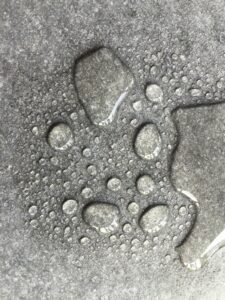 That’s an excellent question, as the difference between “moisture-resistant” and “waterproof” is critical when choosing building materials like fiber cement board.
That’s an excellent question, as the difference between “moisture-resistant” and “waterproof” is critical when choosing building materials like fiber cement board.
Here is a breakdown of the key differences:
Moisture-Resistant Fiber Cement Board
- Definition: The material resists the detrimental effects of moisture and is not easily damaged or broken down by water, even when exposed for some time.
- Performance: It can absorb some water but is designed not to deteriorate or lose its structural integrity when it gets wet. It is resistant to softening, swelling, or mold growth typically seen in materials like standard plasterboard.
- Key Function: The board itself is durable and remains intact even if moisture penetrates the assembly. It is an appropriate substrate (backing board) for areas like bathrooms and laundries.
- Important Note: Moisture-resistant is generally NOT a barrier to liquid water. Water can and will pass through a standard fiber cement board over time. Therefore, it is typically used as part of a waterproof assembly where a separate waterproofing membrane is applied over it (e.g., in a shower recess).
- Definition: The material is impervious to water and is designed to act as a complete barrier, preventing the passage of liquid water through it.
- Performance: True “waterproof” materials, or a waterproof system, will not allow water to penetrate to the structure behind it, even with prolonged exposure.
- How it’s Achieved: Fiber cement board, on its own, is usually not considered waterproof in the strict sense because it is porous and will absorb or wick water. To make an area “waterproof,” you must create a system, which involves:
- Using a highly moisture-resistant substrate (like fiber cement board).
- Applying a complete, seamless waterproofing membrane (like a liquid-applied coating or sheet membrane) over the board and sealing all joints, seams, and penetrations.
Summary Table
| Feature | “Moisture-Resistant” Fiber Cement Board | “Waterproof” |
| Water Effect | Resists deterioration (swelling, rotting) when wet. | Prevents all liquid water penetration. |
| Barrier Function | Not a full barrier; water can pass through. | Acts as a complete and sealed barrier. |
| Material State | A property of the board itself. | A property of a complete system (board + membrane). |
| Typical Use | Substrate for tiling in all wet areas (shower walls, floors). | Required for the complete assembly in areas under direct water exposure (e.g., shower recesses). |
In short, fiber cement board is highly moisture-resistant, but you must apply a separate, dedicated waterproofing membrane over it to achieve a fully waterproof assembly, especially in high-exposure areas like a shower.
29
OCT
2025
OCT
2025
0
